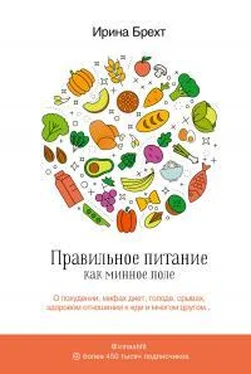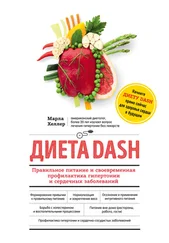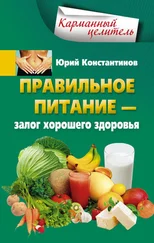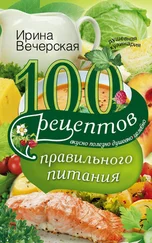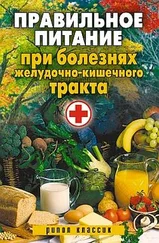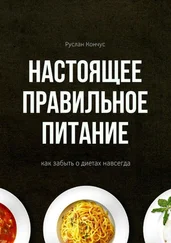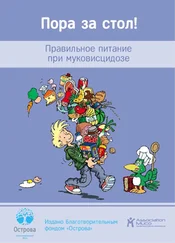13. Fidan T, Ertekin V, Is)ikay S, Kirpinar I. Prevalence of orthorexia among medical students in Erzurum, Turkey. Compr Psychiatry. 2010 Jan-Feb; 51(1):49–54.
14. Ramacciotti CE et al. Orthorexia nervosa in the general population: a preliminary screening using a self-administered questionnaire (ORTO-15). Eat Weight Disord. 2011 Jun; 16(2):e127—30.
15. Lindeman M, Keskivaara P, Roschier M. Assessment of Magical Beliefs about Food and Health. J Health Psychol. 2000 Mar; 5(2):195–209.
16. Miller GD et al. It is time for a positive approach to dietary guidance using nutrient density as a basic principle. J Nutr. 2009 Jun;139(6):1198—202. doi: 10.3945/jn.108.100842
17. Shaffer J. Neuroplasticity and Clinical Practice: Building Brain Power for Health. Frontiers in Psychology. 2016;7:1118. doi:10.3389/fpsyg.2016.01118.
18. Asioli D et al. Making sense of the «clean label» trends: A review of consumer food choice behavior and discussion of industry implications. Food Res Int. 2017 Sep;99(Pt 1):58–71. doi: 10.1016/j.foodres.2017.07.022.
19. Turner PG, Lefevre CE. Instagram use is linked to increased symptoms of orthorexia nervosa. Eating and Weight Disorders. 2017;22(2):277–284. doi:10.1007/s40519—017—0364—2.
20. ВОЗ. Гепатит А (2017). http://www.who.int/ru/news-room/fact-sheets/detail/hepatitis-a
21. Nevin SM, Vartanian LR. The stigma of clean dieting and orthorexia nervosa. Journal of Eating Disorders. 2017;5:37. doi:10.1186/s40337—017—0168—9.
22. Carrotte ER, Vella AM, Lim MS (2015) Predictors of “liking” three types of health and fitness-related content on social media: a cross-sectional study. J Med Internet Res 17(8)
23. World Health Organization. (2006). Constitution of the World Health Organization – Basic Documents, Forty-fifth edition, Supplement, October 2006.
24. Jadad AR, O’Grady L: How should health be defined? (2008). «How should health be defined?». BMJ (Clinical research ed.). 337: a2900
25. https://vc.ru/26886-personal-biohacking
26. FARHUD DD. Impact of Lifestyle on Health. Iranian Journal of Public Health. 2015;44(11):1442–1444.
Часть 5. Глава 28.
1. Yanetz R et al. Using biomarker data to adjust estimates of the distribution of usual intakes for misreporting: application to energy intake in the US population. J Am Diet Assoc. 2008 Mar;108(3):455—64; discussion 464. doi: 10.1016/j.jada.2007.12.004.
2. Pietila#inen KH et al. Inaccuracies in food and physical activity diaries of obese subjects: complementary evidence from doubly labeled water and co-twin assessments. Int J Obes (Lond). 2010 Mar;34(3):437—45. doi: 10.1038/ijo.2009.251. Epub 2009 Dec 15.
3. Buhl KM, Gallagher D, Hoy K, Matthews DE, Heymsfield SB. Unexplained disturbance in body weight regulation: diagnostic outcome assessed by doubly labeled water and body composition analyses in obese patients reporting low energy intakes. J Am Diet Assoc. 1995 Dec;95(12):1393—400; quiz 1401–1402.
4. Muhlheim LS et al. Do unsuccessful dieters intentionally underreport food intake? Int J Eat Disord. 1998 Nov;24(3):259—66.
5. Champagne CM, Bray GA, Kurtz AA, Monteiro JB, Tucker E, Volaufova J, Delany JP. Energy intake and energy expenditure: a controlled study comparing dietitians and non-dietitians. J Am Diet Assoc. 2002 Oct;102(10):1428–1432.
6. http://38r8om2xjhhl25mw24492dir.wpengine.netdna-cdn.com/wp-content/uploads/2016/08/16—07—12-Counting-Calories-Final.pdf
7. Annelies HC Goris et al. Undereating and underrecording of habitual food intake in obese men: selective underreporting of fat intake. The American Journal of Clinical Nutrition, Volume 71, Issue 1, 1 January 2000, Pages 130–134. Doi:10.1093/ajcn/71.1.130.
8. Steven W, Lichtman et al. Discrepancy between Self-Reported and Actual Caloric Intake and Exercise in Obese Subject. 1992.The New England Journal of Medicine.
9. Mahabir S et al. Calorie intake misreporting by diet record and food frequency questionnaire compared to doubly labeled water among postmenopausal women. Eur J Clin Nutr. 2006 Apr; 60(4): 561–565.
10. de Vries JH et al. Underestimation of energy intake by 3-d records compared with energy intake to maintain body weight in 269 nonobese adults. Am J Clin Nutr. 1994 Dec;60(6):855—60.
11. Hebert JR et al. Social desirability bias in dietary self-report may compromise the validity of dietary intake measures. Int J Epidemiol. 1995 Apr;24(2):389—98.
12. L J Martin et al. Comparison of energy intakes determined by food records and doubly labeled water in women participating in a dietary-intervention trial. The American Journal of Clinical Nutrition, Volume 63, Issue 4, 1 April 1996, Pages 483–490, https://doi.org/10.1093/ajcn/63.4.483
13. Dale A. Schoeller et al. Inaccuracies in self-reported intake identified by comparison with the doubly labelled water method. Canadian Journal of Physiology and Pharmacology, 1990, 68(7): 941–949, https://doi.org/10.1139/y90—143
14. Clark D et al. Energy metabolism in free-living, ‘large-eating’ and ‘small-eating’ women: studies using 2H2(18)O. Br J Nutr. 1994 Jul;72(1):21–31.
Часть 5. Глава 29.
1. Das SK et al. Low or Moderate Dietary Energy Restriction for Long-term Weight Loss: What Works Best? Obesity (Silver Spring, Md). 2009;17(11):2019–2024. doi:10.1038/oby.2009.120.
2. Quaade F, Astrup A. Initial very low calorie diet (VLCD) improves ultimate weight loss. Int J Obes. 13 Suppl. 2:107–111, 1989.
3. Redman LM et al. Metabolic and behavioral compensations in response to caloric restriction: implications for the maintenance of weight loss. PLoS One. 4(2):e4377, 2009.
4. Wadden TA et al. Effects of a very low calorie diet on weight, thyroid hormones and mood. Int J Obes. 14(3):249–258, 1990.
5. Wadden TA. Treatment of obesity by moderate and severe caloric restriction. Results of clinical research trials. Ann Intern Med. 119(7 Pt 2):688–693, 1993.
6. Astrup A et al. Meta-analysis of resting metabolic rate in formerly obese subjects. Am J Clin Nutr. 1999 Jun;69(6):1117—22.
7. Dulloo AG et al. Autoregulation of body composition during weight recovery in human: the Minnesota Experiment revisited. Int J Obes Relat Metab Disord. 1996 May;20(5):393–405.
8. Weigle DS et al. Weight loss leads to a marked decrease in nonresting energy expenditure in ambulatory human subjects. Metabolism. 1988 Oct;37(10):930—6.
9. Rosenbaum M et al. Effects of experimental weight perturbation on skeletal muscle work efficiency in human subjects. doi.org/10.1152/ajpregu.00474.2002
10. Martin CK et al. Effect of calorie restriction on the free-living physical activity levels of nonobese humans: results of three randomized trials. Journal of Applied Physiology. 2011;110(4):956–963. doi:10.1152/japplphysiol.00846.2009.
11. Byrne NM et al. Does metabolic compensation explain the majority of less-than-expected weight loss in obese adults during a short-term severe diet and exercise intervention? Int J Obes. 36:1472–1478, 2012.
12. Thomas DM et al. Can a Weight Loss of One Pound a Week be Achieved With a 3,500 kcal Deficit? Commentary on a Commonly Accepted Rule. International journal of obesity (2005). 2013;37(12):1611–1613. doi:10.1038/ijo.2013.51.
13. Christopher D. Gardner, PhD et al. Comparison of the Atkins, Zone, Ornish, and LEARN Diets for Change in Weight and Related Risk Factors Among Overweight Premenopausal Women. The A TO Z Weight Loss Study: A Randomized Trial. JAMA. 2007;297(9):969–977. doi:10.1001/jama.297.9.969
Часть 5. Глава 30.
1. Yao M, Roberts SB. Dietary energy density and weight regulation. Nutr Rev. 2001 Aug;59(8 Pt 1):247—58.
2. Poppitt SD, Prentice AM. Energy density and its role in the control of food intake: evidence from metabolic and community studies. Appetite. 1996 Apr;26(2):153—74.
Читать дальше
Конец ознакомительного отрывка
Купить книгу
